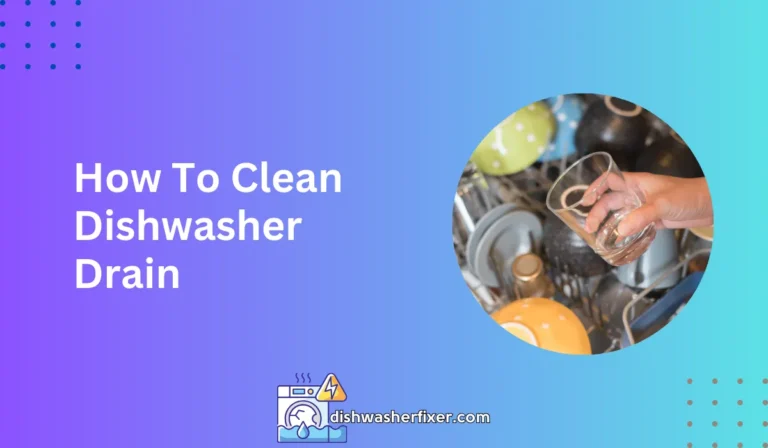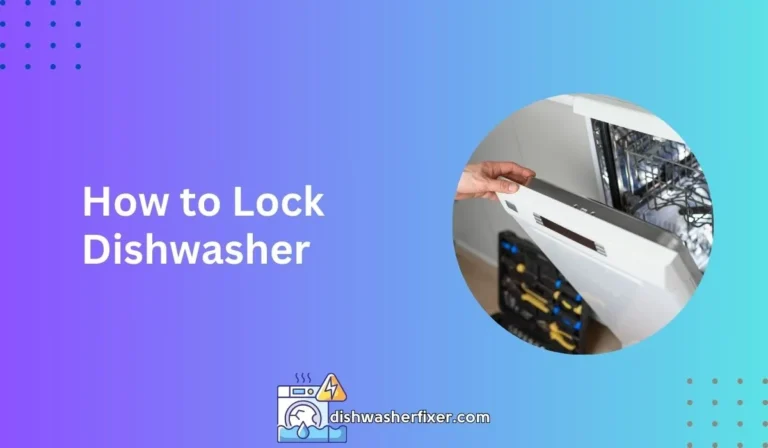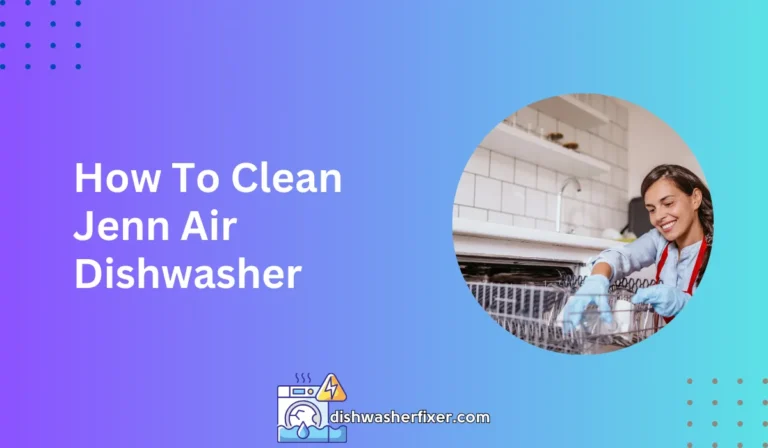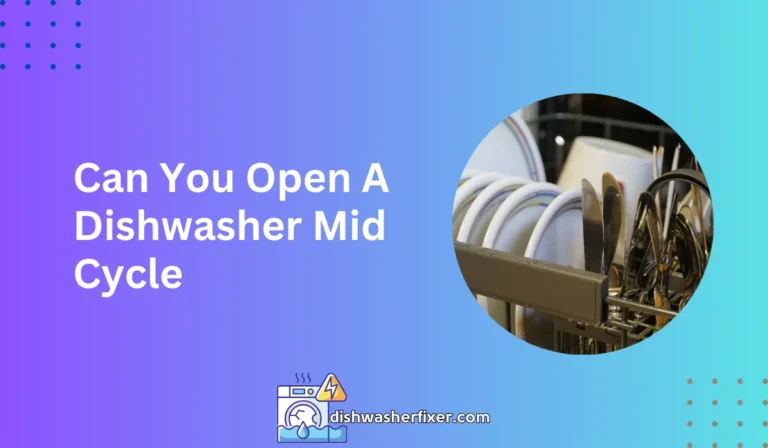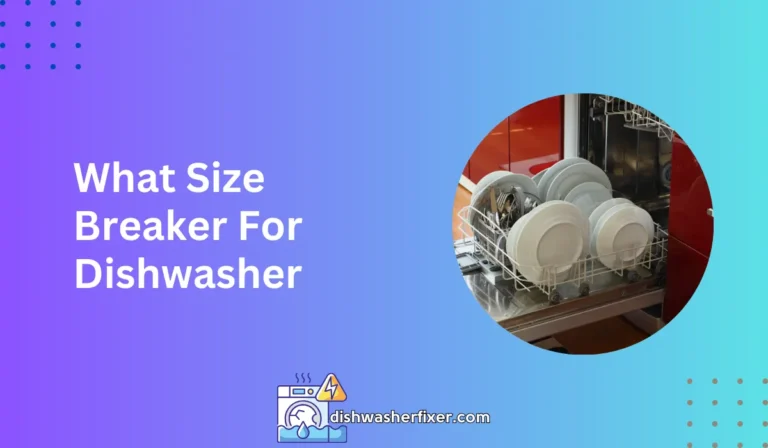How to Clean Filter on Whirlpool Dishwasher: Quick & Easy Guide
To clean the filter on a Whirlpool dishwasher, first remove the bottom dish rack. Twist out the cylindrical filter and lift out the flat filter beneath. Wash both filters with warm, soapy water and a soft brush. Rinse well, replace the flat filter first, followed by the cylindrical filter, ensuring it’s locked in place.
Step-by-Step Guide to Cleaning the Filter on a Whirlpool Dishwasher
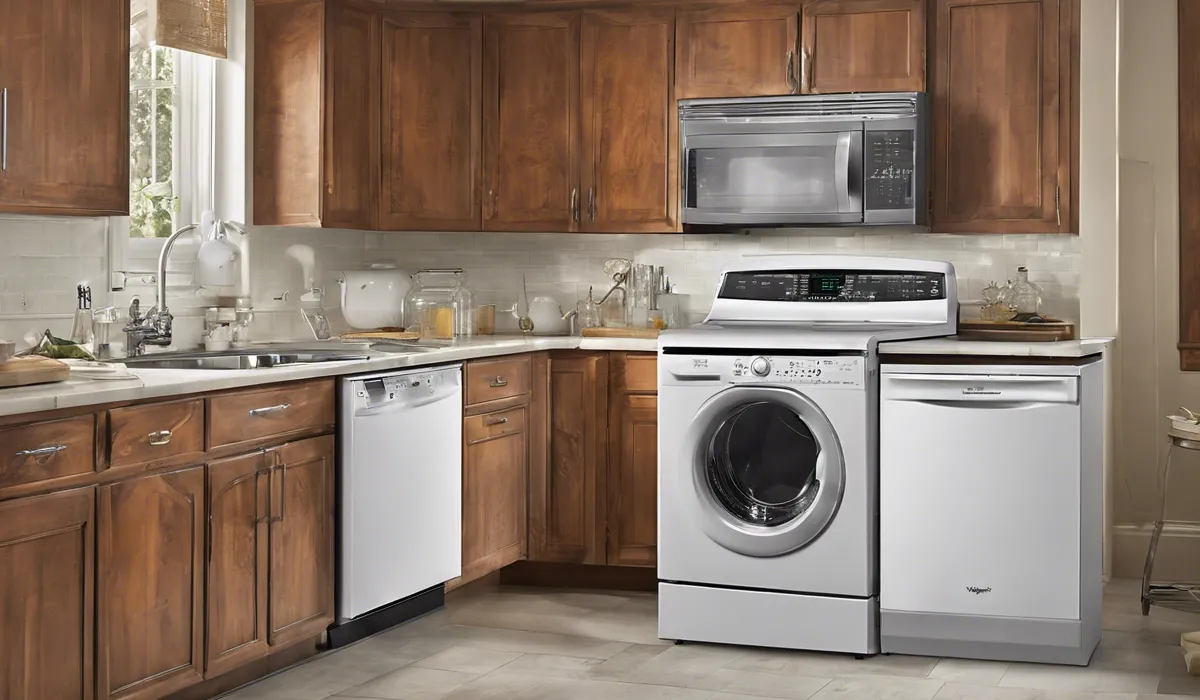
Gather the Necessary Tools and Materials
Before you begin, it’s important to have the right tools and materials on hand. You’ll need warm, soapy water and a soft-bristled brush to gently clean the filters.
Ensure you have a towel or cloth to dry your hands and catch any water spills. Having everything close by will streamline the cleaning process.
Turn Off the Dishwasher and Open the Door
Safety first! Always turn off your dishwasher before cleaning to avoid any electrical hazards. Open the dishwasher door fully so you can easily access the bottom rack and filter assembly.
Locate and Remove the Bottom Rack
Slide out the bottom rack to expose the dishwasher’s floor. This will give you ample space to remove and clean the filters properly. Set the rack aside in a safe place where it will not be in the way.
Find the Filter Assembly in the Bottom of the Dishwasher
Look for the filter assembly at the dishwasher’s base. It typically consists of a cylindrical upper filter and a flat lower filter beneath it. Identifying these parts correctly is crucial for the next steps.
Twist and Remove the Upper Filter Assembly
Grasp the upper filter and twist it to unlock it from its housing. Once loose, gently lift it out, taking care not to damage the fine mesh or any other part of the filter assembly.
Lift Out the Lower Filter
With the upper filter removed, you can now access the lower filter. Lift it straight out of the dishwasher, being mindful of its placement for when you need to reinstall it.
Rinse Both Filters Under Running Water
Hold each filter under running water to rinse away loose debris and food particles. Ensure the water is not too hot, as extreme temperatures can warp the filters.
Scrub the Filters with a Soft-Bristled Brush if Necessary
If rinsing alone doesn’t remove all the residue, use a soft-bristled brush to gently scrub the filters. Be thorough but gentle to avoid any damage.
Check the Filter Housing for Debris and Remove Any Present
With the filters out, inspect the filter housing for any trapped debris. Remove any particles you find to prevent future blockages and maintain proper dishwasher function.
Reinstall the Lower Filter and Then the Upper Filter Assembly
Once the filters are clean, place the lower filter back into its housing, ensuring it sits flat and secure. Then, carefully reinstall the upper filter by twisting it back into place.
Ensure Both Filters Are Locked in Place
Double-check that both filters are locked in place to prevent any issues during the dishwasher’s operation. They should fit snugly without any gaps.
Replace the Bottom Rack
Slide the bottom rack back into the dishwasher carefully. Make sure it’s properly aligned on its tracks for smooth gliding.
Turn on the Dishwasher to Run a Rinse Cycle Without Dishes
Finally, run a rinse cycle without any dishes. This will help clear out any remaining debris and ensure the dishwasher is ready for its next load.
Tips and Best Practices for Filter Maintenance

Regular Maintenance Intervals for Optimal Performance
Cleaning your dishwasher’s filters regularly can greatly improve its performance. Aim to clean the filters every month or more frequently if you notice any decline in performance.
Avoiding the Use of Abrasive Cleaners or Tools
Always use non-abrasive tools and cleaners to prevent damaging your dishwasher’s filters. Harsh chemicals or scrubbers can harm the delicate mesh and reduce the effectiveness of your dishwasher.
Ensuring Proper Placement of Dishes to Prevent Filter Clogging
Properly loading your dishwasher not only ensures clean dishes but also reduces the risk of clogging the filters. Make sure dishes do not block the spray arms and that leftover food is scraped off before loading.
Checking and Cleaning the Filter After Particularly Dirty Loads
If you’ve washed a load with heavily soiled dishes, it’s a good practice to check and possibly clean the filters right after. This can prevent any build-up and maintain a clean, odor-free dishwasher.
The Importance of Using a Dishwasher-Safe Detergent
Using the right detergent is critical for the health of your dishwasher. Always opt for detergents specifically designed for dishwasher use to avoid any adverse reactions or residue build-up.
Troubleshooting Common Issues After Cleaning the Dishwasher Filter

Dishwasher Not Draining Properly
If your dishwasher isn’t draining properly after cleaning the filters, check the drain hose for kinks or blockages. Also, ensure the filters are correctly installed and that there’s no debris blocking the drain.
Persistent Odors Even After Filter Cleaning
Bad smells can linger if there’s trapped food in hidden areas. Run a dishwasher cleaner through a cycle to tackle any hidden grime. Regularly cleaning the filters should also help reduce odors.
Dishes Not Coming Out Clean
If dishes are still not clean after filter maintenance, consider whether the dishwasher is overloaded or if the water temperature is high enough. Also, check if the spray arms are moving freely and not blocked.
Noise Issues During Operation
A noisy dishwasher might indicate a filter incorrectly seated or an object obstructing the spray arms. Inspect and adjust as necessary to reduce unwanted noise.
When to Seek Professional Maintenance or Repair Services
If you’ve followed all the steps and best practices and your dishwasher is still not performing correctly, it may be time to seek professional help. Persistent issues may indicate a more serious problem that requires expert attention.
FAQs About Cleaning Filter on Whirlpool Dishwasher
How do I remove the filter from my Whirlpool dishwasher?
To remove the filter from your Whirlpool dishwasher, first take out the bottom dish rack, then twist and pull out the cylindrical filter, followed by lifting out the flat filter beneath it.
What should I use to clean the filters from my Whirlpool dishwasher?
Clean the filters with warm, soapy water, using a soft brush to gently scrub them. Make sure to rinse them well after washing.
How do I replace the filters after cleaning them?
After cleaning, replace the flat filter first by placing it at the bottom, then lock the cylindrical filter in place by twisting it.
Do I need to use any special tools to clean my Whirlpool dishwasher filters?
No special tools are required; you just need warm, soapy water and a soft brush to clean the filters.
How often should I clean the filters in my Whirlpool dishwasher?
Check your Whirlpool dishwasher’s manual for specific recommendations, but a good practice is to clean the filters every 1-3 months, depending on usage.
Final Thoughts
Cleaning the filter of a Whirlpool dishwasher involves a simple process. Start by removing the bottom rack to access the filters. Gently twist and lift the cylindrical filter, followed by the flat filter.
Use warm, soapy water and a soft brush to clean both filters thoroughly. After rinsing, replace the flat filter, then the cylindrical one, ensuring it clicks into place for optimal performance.

